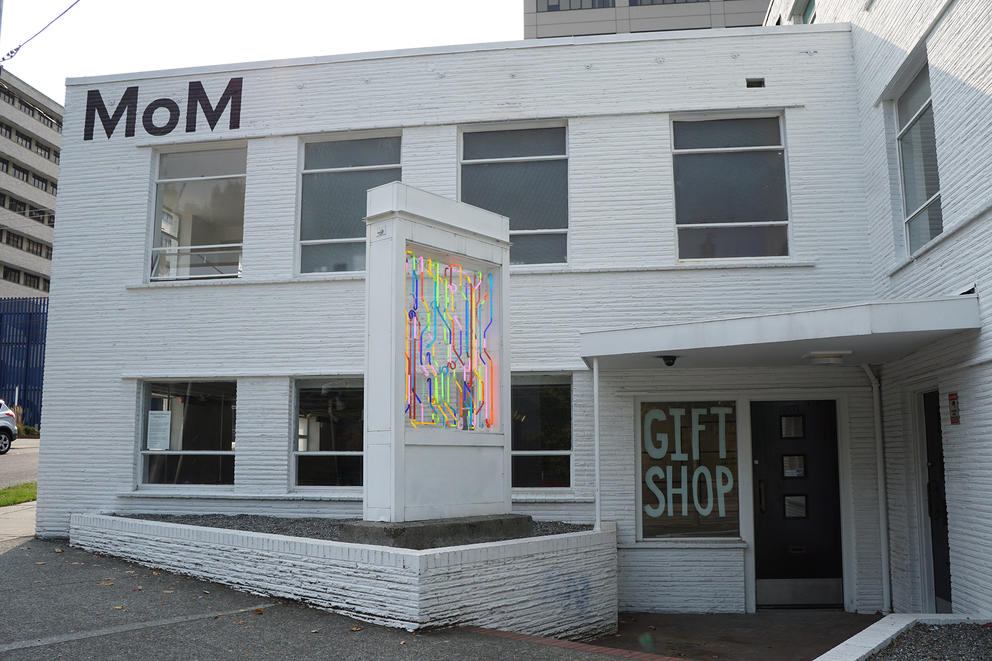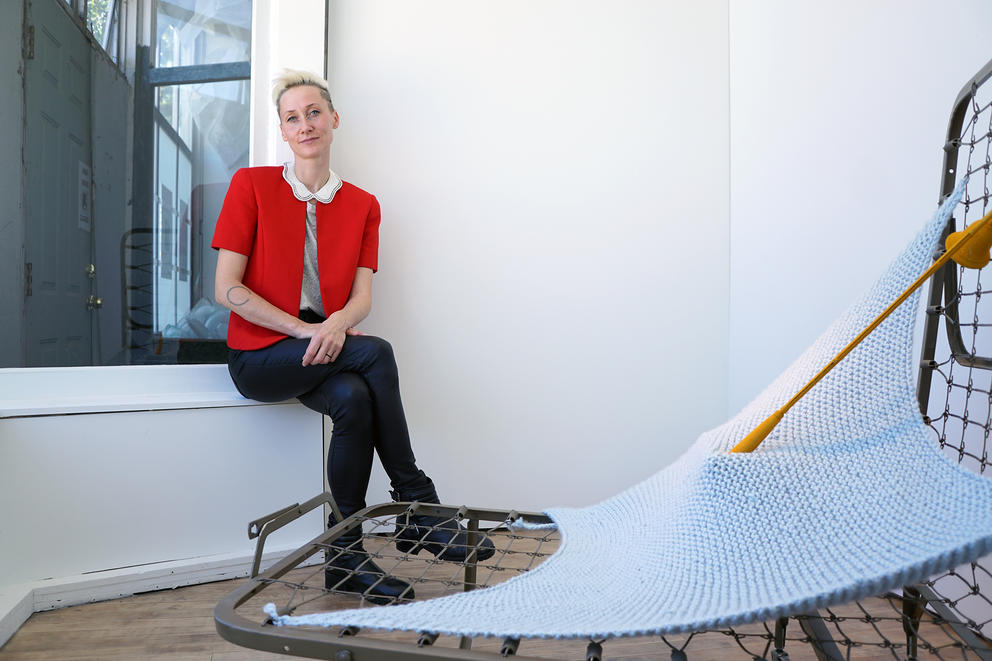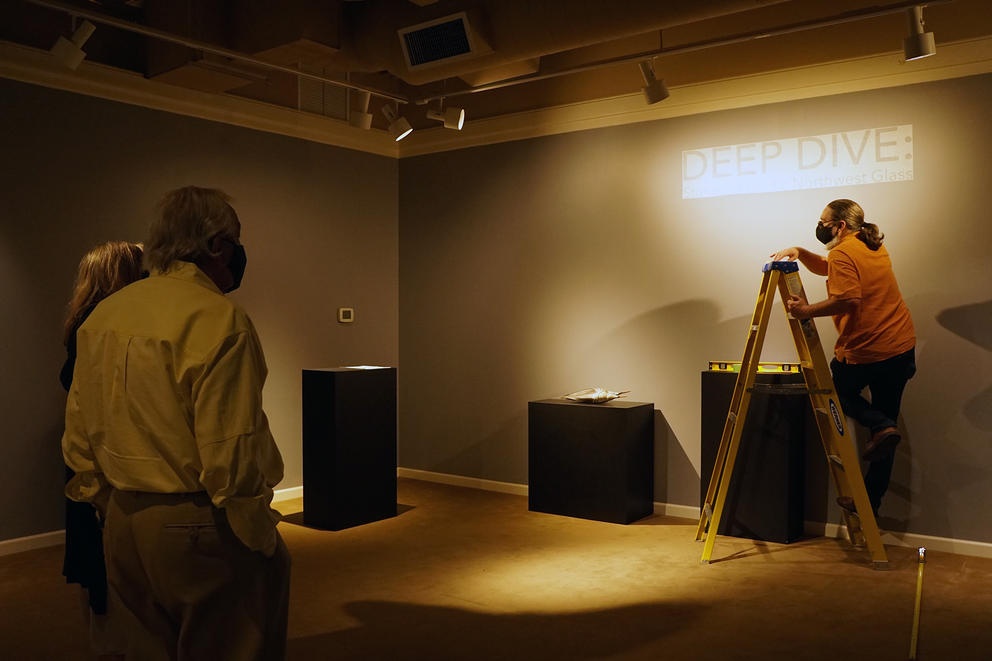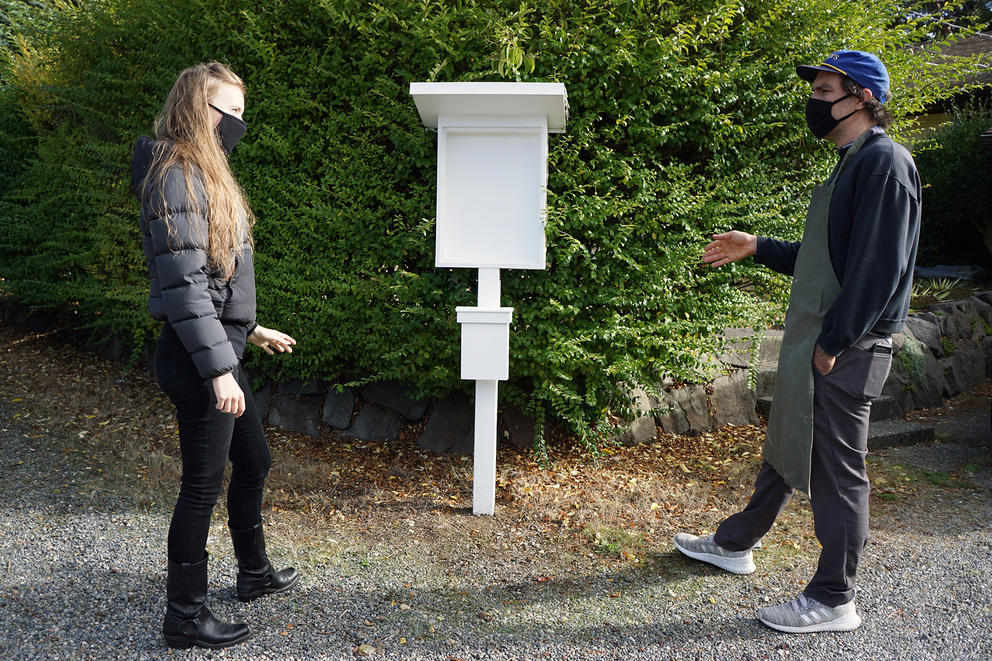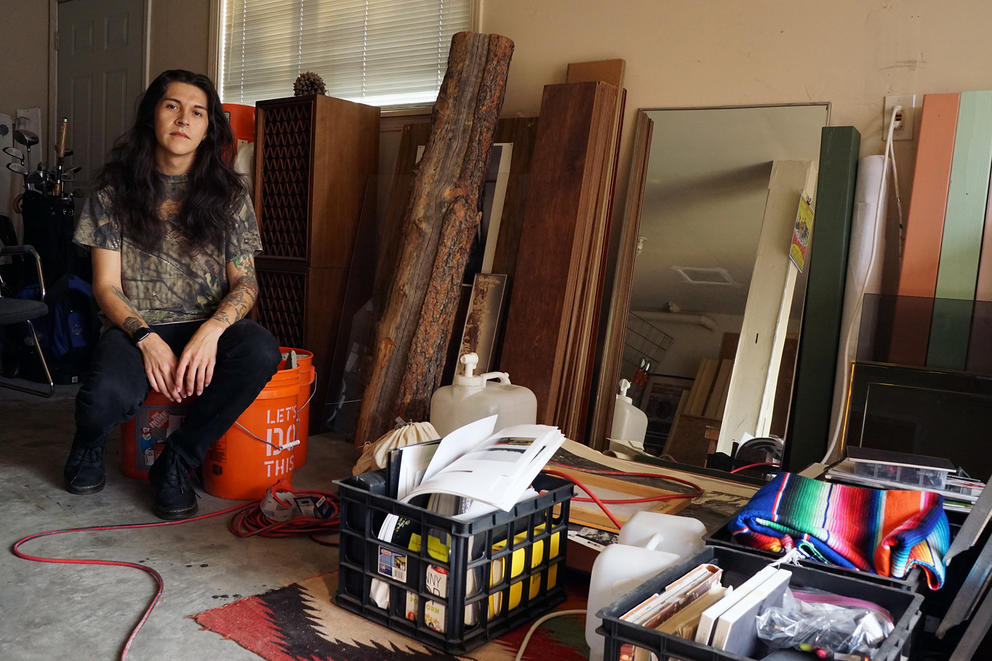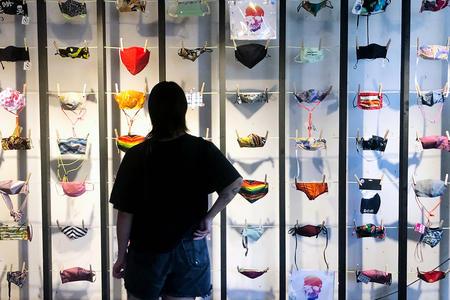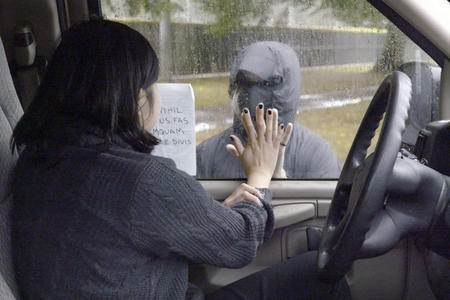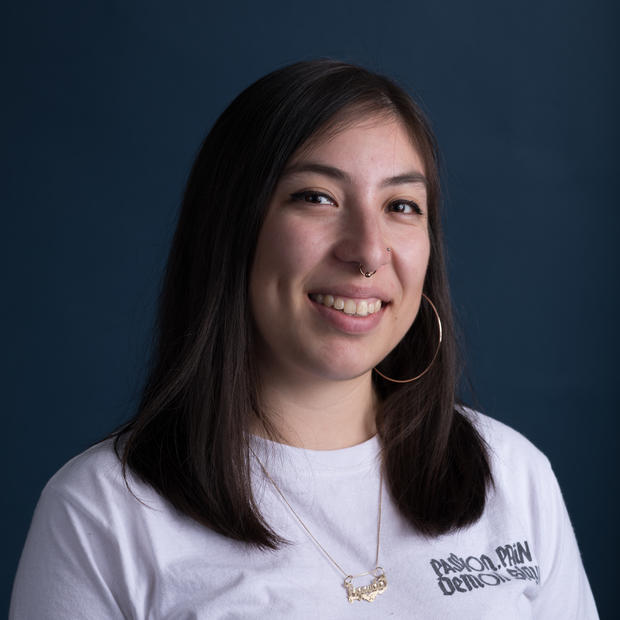The former medical office
“I’m totally stressed,” says arts entrepreneur and curator Greg Lundgren, as he pets a stuffed toy (panda body, giraffe head) displayed in the gift shop of Seattle’s soon-to-open Museum of Museums. He pauses. “But it’s not my first rodeo.”
Lundgren’s rodeo usually goes like this: Find an empty property slated for future development or otherwise languishing, fix it up and reopen it as an innovative space for local art. But transforming a derelict midcentury medical office into a contemporary art museum amid a pandemic? That’s next level, even for Lundgren.

The museum — with three floors of galleries, a gift shop, permanent outdoor art and a four-seat theater — should have opened a year ago. Lundgren signed a lease on the expansive space at the border of Capitol Hill and First Hill in June 2019. But he soon hit a serious permitting snafu that dragged on for months. And then, you guessed it: the pandemic.
“If there were a giant earthquake it would not surprise me,” Lundgren says dryly, as he gives me a tour of the space. Artworks for the inaugural show, Goodwitch/Badwitch (curated by Bri “The Hoodwitch” Luna and Lundgren), lean against walls, awaiting installation.
Upstairs, an immersive, candy-colored installation by Neonsaltwater and Brian Sanchez is still in progress; for now a palm tree shimmers through a sheet of hot-pink frosted glass. Downstairs, selfie lovers can bask in the fully floral bathroom by artist Elisa Maelen. In the gift shop, bathing, bare-breasted “Bigfeet” creatures in local painter Crystal Barbre’s 20-foot-long mural await eventual visitors. Although the pop-up show Mask Parade is already open on weekends to the public, the museum fully opens (at 25% capacity and by appointment) to members later this month, and in November to the general public. If all goes right, that is.

“We're all charting new territory,” Lundgren says. “I feel like we have machetes and we're just going through the jungle.”
Others might have given up, turned around and gone home. Not Lundgren. His conviction that Seattle is both artistically and monetarily rich — and that he can foster a stronger relationship between artists and collectors to avoid a creative brain drain — keeps him going.
In the stairwell at MoM, a black decal on a rare bare wall encapsulates Lundgren's point: “There is no version of a great city with a declining artist population.”
The Ballard shop window
Anna Mlasowsky’s Ballard neighbors have been sliding notes under her door lately. “Thank you so much for doing this!” and “This is the best thing that has happened in the neighborhood in years,” the messages read.
“This” refers to Das Schaufenster, a new window-only exhibition space in the former corner store where Mlasowsky works and lives.
An artist in her own right (her glass art is currently on view at Bellevue Arts Museum), Mlasowsky had dreamt for years of turning the ground-floor shop window into an art space. So when COVID-19 canned a residency in Australia and closed glass-blowing studios, she got to work laying new floors, fixing the windows and putting in new wiring and new walls during a two-month renovation. “That could only happen because all of my work got canceled this year,” Mlasowsky says.
Das Schaufenster, which opened in July, means “display window” in German. “In English, the word focuses on what is on display,” Mlasowsky says. “In Germany, we focus on [Schau], the looking into the window. I really like that. It’s more about the looking than what is seen.”
Here to be looked at: work by artists who have had shows canceled by COVID-19, with a particular focus on immigrant and activist artists, as well as guest-curated shows. Schaufenster’s first show, by New York-based artist Anna Parisi, tackled police brutality in Brazil; earlier this month was a very-apt-for-this-moment exhibit, Can we just cuddle by Seattle’s Connor Walden.
Up next are Los Angeles-based mixed-media artist Shiva Aliabadi, an exhibition organized by the Goethe Institute Seattle, as well as shows by Seattle artists Emlyn Strzempka, who will create a multimedia installation, and Luke Armitstead, whose canceled University of Washington MFA exhibition will finally get some eyeballs at Schaufenster.
“For me, it’s really to bring art to this neighborhood,” Mlasowsky says. “Instead of asking them to come see art in downtown Seattle, I was like: ‘I’m bringing art to you.’”
The family affair
Gallery Mack might be Seattle’s most pedigreed gallery you’ve never heard of. It’s been around for over 40 years (that’s about 400 in Seattle gallery years) and has survived four moves — including Bellevue to Pioneer Square — since its founding in 1977 by Barbara Mack. For more than 30 years, it has perched on a corner near Pike Place Market — for the past 14 months under new ownership.
The gallery’s new owners have strong ties to the Seattle art scene. Paulette Bufano led development at the Pilchuck Glass school for years, and her husband Ralph’s leadership took the Museum of Flight to new heights. Their daughter, Michelle Bufano, led the Pratt Fine Arts Center for years before moving to the Chihuly Garden and Glass, where she is executive director. Tim Detweiler, Michelle’s husband, is the only non-Bufano by blood, but as former director of both the MadArt gallery in South Lake Union and the Museum of Northwest Art in La Conner and current manager of Amazon’s internal art programs, he boasts a serious arts resumé.
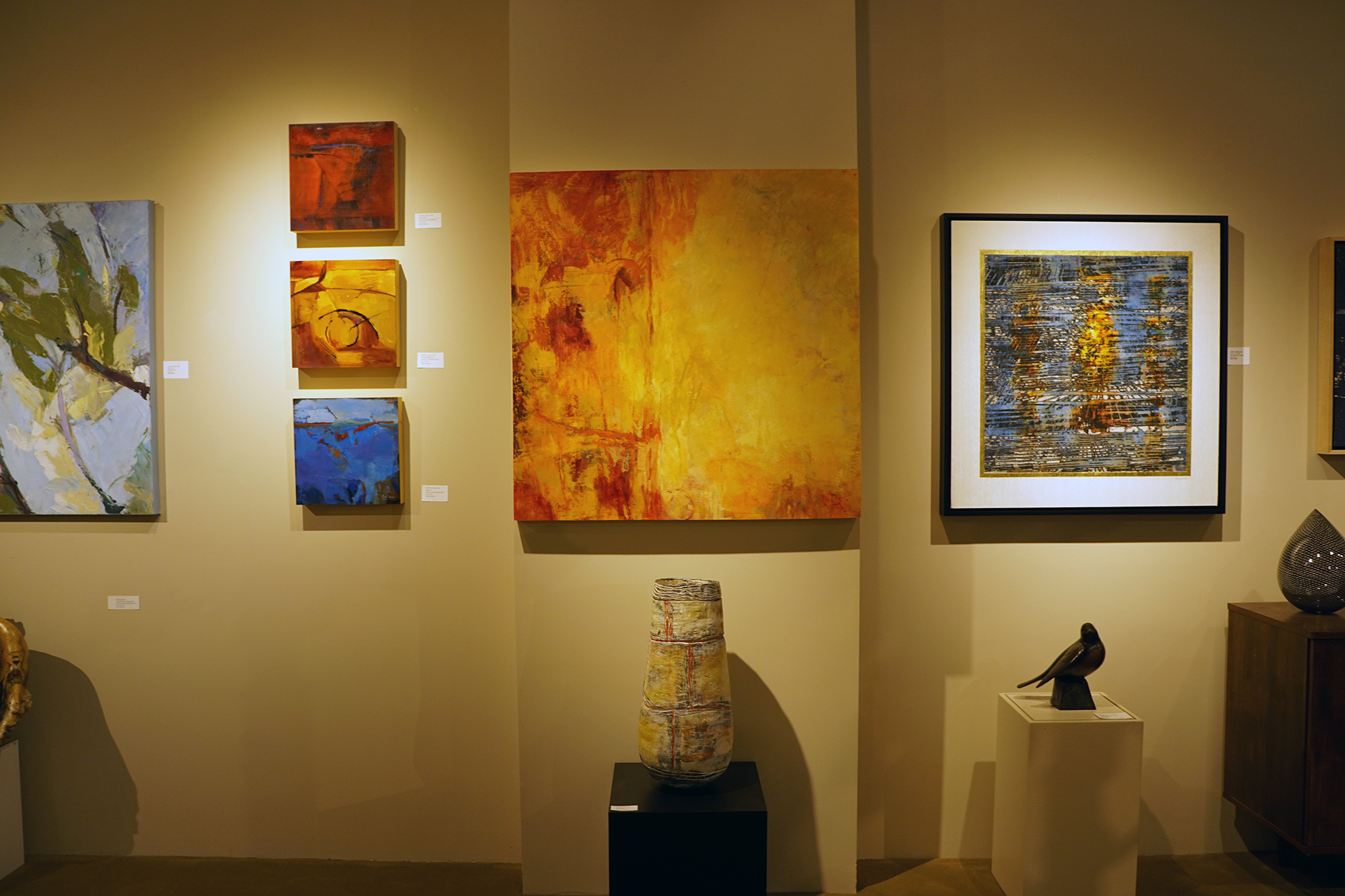
“Normally, a curator is a very singular kind of role ... someone who has the final say — but we really do work through it together,” Detweiler says.
“We all kind of take turns helping out,” adds Michael Bufano, Michelle’s brother and the only partner with a background in business.
The family purchased Gallery Mack in August 2019 from Mack’s partner, who had been running it since she passed away in 2016. The plan was to get a feel for the market, ramp up later. “But then, of course, this is the most unusual year in the last 30 years,” Detweiler says. Much of the gallery’s traditional clientele — cruise ship and Pike Place Market tourists — evaporated. So the family pivoted by rekindling connections with a more local clientele and expanding the artist roster. Currently on view, through Nov. 28, is a show featuring works by members of the Studio Glass movement.
“We’re really happy, given the circumstances, how we’ve weathered the storm,” says Michael Bufano. “We’re still keeping our head above water.”
The mailbox
At the northern edge of Des Moines, somewhere in between Burien’s Criminal Justice Center and the Normandy Park Alehouse, you’ll find King County’s tiniest art space: Sun Spot.
Standing 6 feet tall and measuring roughly 380 square inches, the white box on a wooden post might be mistaken for a mailbox or a “For Sale” sign, says Paul Nelson, the local artist and furniture maker who literally built Sun Spot with his two hands.
“It’s not like a commercial gallery in any way,” Nelson says. “ ‘Spot’ seemed to allude to the smallness of it.”
Nelson’s first art space — in a south-facing display window of the Seattle Urban Outfitters store where he worked — wasn’t a traditional gallery either. Sales of the neon works and sculptures at Sun Gallery weren’t really the goal and shows sometimes stretched for months. But like Sun Spot, it was a way to bring the work of artists he admired to the public, rather than vice versa.
Sun Gallery went on hiatus two years ago when Nelson took another job. The lockdown was a proverbial kick in the butt to act on his long-standing plan to build a small gallery in his front yard, facing the street.
“It seems fitting for COVID times,” Nelson says. “It's probably one of the safer art experiences you can have.”

Currently “hanging” is the second show since Sun Spot opened this summer: a round, yellow cedar disk carved by Seattle artist Tyna Ontko, inspired by the celestial power of the famous Nebra Sky Disk. Sun Spot’s size doesn’t allow for more than one compact artwork alongside a smaller box holding 10 printed booklets (in this case, featuring drawings by Ontko), which are free to take, first come, first served.
“It’s a fun thing to give to my neighborhood,” Nelson says, “if they will accept it as a gift.”
The Instagram gallery
Seattle artist and gallerist Robert Yoder won’t tell you where his newest gallery is. And he doesn’t expect you to go on a quest to find it. Tela Real, which is an actual exhibition space in an actual basement of an actual retail space in Seattle, is just purely for the ’gram.
“You don’t really need gallery walls, as far as Instagram is concerned,” Yoder says. “As long it’s on a white wall, it’s in a show … no need to have a physical visitor,” says Yoder, who has operated the celebrated gallery SEASON out of his house since 2010. “It made sense to start a gallery that flat out said: no visitors, no website, no hours. It's only on Instagram all the time.”
And even though Zooming, Facebook live-ing, Instagramming and YouTube-ing visual art shows has been a necessary pivot during COVID-19 closures, Tela Real’s no in-person visitor policy was established roughly a year before the coronavirus hit the U.S. Letting people into the basement space would be a disruption to the retail space above it, Yoder says.
Plus, thanks to a remodeling snafu, the door opens only about 15 inches, which means Yoder has to squeeze both himself and the artwork through. “That limits the artwork,” he says. “The majority of the work I’ve been showing has been paintings and drawings and very small sculptures.”
Tela Real (“real screen” in Latin) opened in March 2019 with five abstract collages seemingly fashioned from construction site debris by California-based artist Nicole Guerrera.
COVID-19 hasn’t changed Yoder’s modus operandi at Tela Real. The shows — featuring local and national artists such as Andrew Souza, Baso Fibonacci, Ellen Ziegler and Harold Hollingsworth (whose mixed-media collages are on view until Oct. 16) — run for six weeks. There are still no visitors, the door still jams and patrons purchase the work via Instagram messages.
“Sales have been very good,” Yoder says, “considering no one sees the art in person.”
The livestream
Stefan Gonzales belongs to two communities that can be quite insular: the art world and the gaming cliques of Twitch, the Amazon-owned livestreaming platform. Now, the Seattle-based artist (who uses they/them pronouns) has found a way to break open both worlds and circumvent pandemic restrictions: by opening a Twitch-only art space in their basement.
Deck is named for the 6-by-7-foot, L-shaped wooden platform the artworks are displayed on. To visit, you need only a working browser and enough bandwidth to watch the livestream.
The space started as an emergency measure: Just like other art students at the University of Washington, Gonzales saw their thesis exhibition at the Henry Art Gallery — traditionally a crowning experience that drums up interest — canceled earlier this spring.
Gonzales planned to welcome the orphaned artworks of UW peers in their own basement, but had to toss out that plan as the pandemic raged on. The solution: a smartphone on a tripod.
The first exhibition at Deck, Dare To Judge, curated by Gonzales as part of a residency at UW’s Jacob Lawrence Gallery, went live this September. On screen, sunlight inched west across a few artworks from three camera angles, in total silence. This month, while Gonzales awaits funding to pay future artists, they will show their own work, a series of sensuous and contemporary land art sculptures, followed in November by local artist Makena Gadient’s mail art.
The artists themselves make appearances on the stream during free Friday evening artist talks — a relaxed atmosphere (Gonzales’ dogs make impromptu appearances), where the public can ask questions via the chat module. It’s unlike and more accessible than most artist talks, and that’s the point.
“I don't think [traditional artist talks] are always meant for everybody,” Gonzales says. “Twitch lets you have those sorts of conversations a little easier.”
Get the latest in local arts and culture
This weekly newsletter brings arts news and cultural events straight to your inbox.


